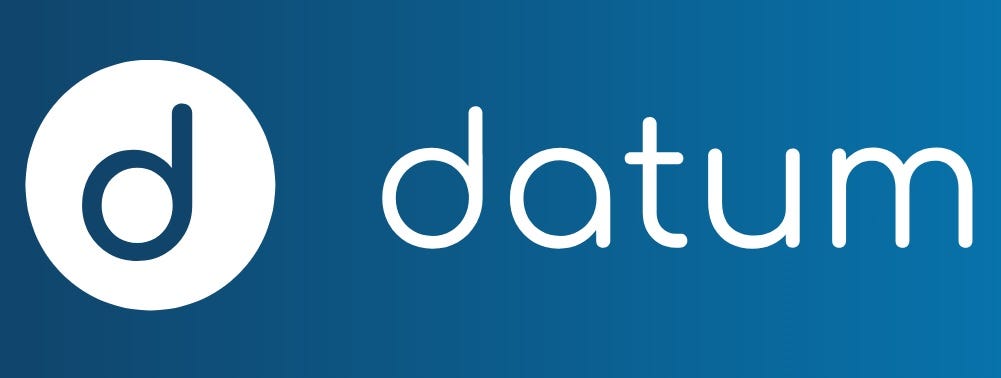Latest news about Bitcoin and all cryptocurrencies. Your daily crypto news habit.
 Reclaim What’s Rightfully Yours
Reclaim What’s Rightfully Yours
The likes of Facebook and Google are all about data. Your data. My data. All users’ data. It’s a big-money industry that’s only getting bigger.
There’s irony in how we all tee ourselves up for data-harvesting by checking that little ‘Terms of Service’ box when enrolling in a service. Who’s got time to read fine print?
Creators of software services and social networks count on us either ignoring their terms altogether and mindlessly agreeing, or FOMO kicking in and us signing away our souls regardless.
‘Cause, you know, even your grandma and most of her pinochle club are on Facebook. I mean, c’mon, what could ever go wrong?
 Oh… right… it DID go terribly wrong…
Oh… right… it DID go terribly wrong…
Point is, these mega-corps collect our data and make massive profits from selling it without our consent.
I don’t know about you but that just doesn’t sit right with me. Feels a little slimy.
I doubt you’ll pull the plug on social media or your favorite search engines anytime soon. I’m not trying to point you in that direction just yet.
But, if you’d like to secure that same data on the blockchain — then get rewarded for sharing it anonymously—keep reading to learn about Datum, a post-ICO decentralized storage network and data marketplace.
And before I reveal any more, there’s something you should know…
*Disclaimer: This is not investment or financial advice. I’m not a financial expert by any stretch of the imagination. Most information within this article is speculative and merely my own personal opinion. Always conduct your own research before contributing to any startup projects.
Always remember that what you do with your funds is your decision to make. And if that decision proves too difficult for you alone, seek guidance from a financial professional.
I may or may not receive a small allocation of tokens for creating this content. That said, I will do my best to remain unbiased and fair. I try to avoid all FOMO and FUD and never wish to impart those emotions on my fellow crypto-heads.
Before jumping into some analysis of the project, let’s get you up to speed. In their own words, here’s what Datum is all about:
All Your Data Belongs to You, Not Them
Although you may be giving it away against your will, your data is still yours to own. After all, your data is, well … it’s you. Data is your images and likeness and personally identifying info like passport numbers and your home address.
The sum of its parts creates a package that uniquely identifies you as no one other than you. This is your digital life.
Datum is providing an encrypted, infinitely scalable storage solution for safekeeping of your online persona and other important data.
Rather than your data floating around on random servers — privy to the prying eyes of certain employees — Datum lets you use a blockchain to lock it down.
Images immediately come to mind when assessing a use case for the Datum project. Ever felt a little lascivious and sent a photo to your lover that’s most definitely NSFW?
I bet you wouldn’t want Bob in IT to stumble across that. Me either.
There’s more to it than that, of course. Contracts aren’t the only things that are getting smarter these days. Your home and your TV and even your clothes can generate data.
And thanks to the proliferation of Internet of Things (IoT) technology, nearly every device around us is getting brainy and much more communicative.
One day in the near future our toasters will be able to detect levels of mold on the bread we insert. The Toastmaster 5000 may relay a message to the refrigerator that in turn suggests its human try a different bread storage location.
Regaining Control
Taking back what’s rightfully yours won’t be easy. Freely giving away our data is something we tend not to think about. Which means making a change is going to require a little mental effort. Uh-oh!
Maybe you need a little kick in the pants to wake you up and get you going? Well, if you’re the type who’s motivated by money, chew on this little nugget of info: Your personal data is worth over $2000 — Datum’s estimate, not mine — per year.
No, I didn’t accidentally add an extra zero.
FB and Google and Twitter and LinkedIn and all their kind earn a share of 2+ grand every year by selling your data.
Now, I’m not saying that you’re going to earn $2K every year by using the Datum network. It could be less, it could be even more. Lots of different factors are involved which makes a figure tough to pinpoint.
But even a fraction of that would be nice, especially considering the data really belongs to us although everyone but us is getting paid for it.
Backed by Blockchain Tech
Datum’s network is essentially a distributed database. But since that’s not secure enough, the whole operation is supported by a blockchain ledger.
Rather than merely data-dumping into a repository, smart contracts allow immutable data to be structured as well as controlled by the rightful owner.
All data entering the network is encrypted. And while encryption takes place, data is labeled with terms of its use. As an owner of data — private or corporate — you can control who can view or use it, whether or not it’s anonymous, its lifespan, and more.
What qualifies as “more,” you ask? Well, since you brought that up… let’s talk monetization…
Getting Paid
Now we’re getting to the fun part of rewards for something you’re already doing. I feel that concept is one of the best attributes of blockchain technology. Tokens have the ability to make things so much easier.
Generators of data within the Datum ecosystem have a few different ways to earn payouts. While enterprise solutions are in the works, Datum’s app — currently in beta — is currently for personal use.
A subsequent article will dive deeper into the app’s functions but we’ll discuss top-level details here.
App users begin at level 1. By sharing data to earn DAT tokens, you’re also earning MMO-like experience points that allow you to progress to higher levels to gain larger rewards.
Data buyers can make one-off or subscription-based purchases — you may get one-time rewards or they may be of the recurring variety.
Paid emails are an example of what’s available within the app.
There’s a toggle switch that lets you turn email solicitations on and off. By agreeing to receive emails — the marketer doesn’t possess your email address, only the right to send to it — you’re compensated with up to 100 DAT tokens.
The current bear market isn’t helping anything but the current rate for DATs is around $0.01. At the full rate of 100 tokens, that’s a dollar an email.
Granted, the project is nascent and the emails don’t come every day. But as it grows and the crypto market — hopefully soon! — recovers, users should see greater rewards.
Can you imagine an average of 10 emails per day? I can, it’s not hard. An extra $300 every month for very little effort certainly sounds enticing.
And your email address is only one of many data sources you can link to the app, and each data source you integrate carries its own set of rewards.
Final thoughts…
As humans living in the age of technology, we create loads of data. Our mobile phones — practically fused to our hands in some cases — make data that makes data babies and data grandchildren.
Point is, you’re creating data all day long, every day. And big networks are swimming in the profits you create for them like Scrooge McDuck in his pool of golden tokens.
Now, I enjoy the concept of collecting rewards for sharing anonymized data. The anonymous part is the key. For me, anyways.
I tend to have a focus on privacy and don’t like giving away my information. But if something like an email address doesn’t have a personal association, I’m glad to share mine in exchange for tokens.
That’s a super-simple way to HODL, which is what I’m all about.
In the next article, we’ll go over how the project’s DAT tokens function within the platform. But until then…
DYOR
Doing your own research is an industry-wide recommendation. The crypto market is wildly volatile and speculative and it’s tough to assess any project’s true value.
Nevertheless, it’s still important to form an opinion of your own.
Whitepapers are a great place to start. The Datum Whitepaper is clear and nicely illustrated. It’s very easy to read compared to some technical beasts I’ve encountered.
And here are some further resources for you to dig into:
Get SocialFacebook LinkedIn MediumTelegram (EN / RU / ZH) TwitterBy the way…
If you like what you see here and need help getting your crypto message to the masses, I’d love to hear about your project.
Feel free to reach out to me here: blockchainauthor at Gmail
Project Datum: Monetizing Data You’re Already Giving Away was originally published in Hacker Noon on Medium, where people are continuing the conversation by highlighting and responding to this story.
Disclaimer
The views and opinions expressed in this article are solely those of the authors and do not reflect the views of Bitcoin Insider. Every investment and trading move involves risk - this is especially true for cryptocurrencies given their volatility. We strongly advise our readers to conduct their own research when making a decision.
